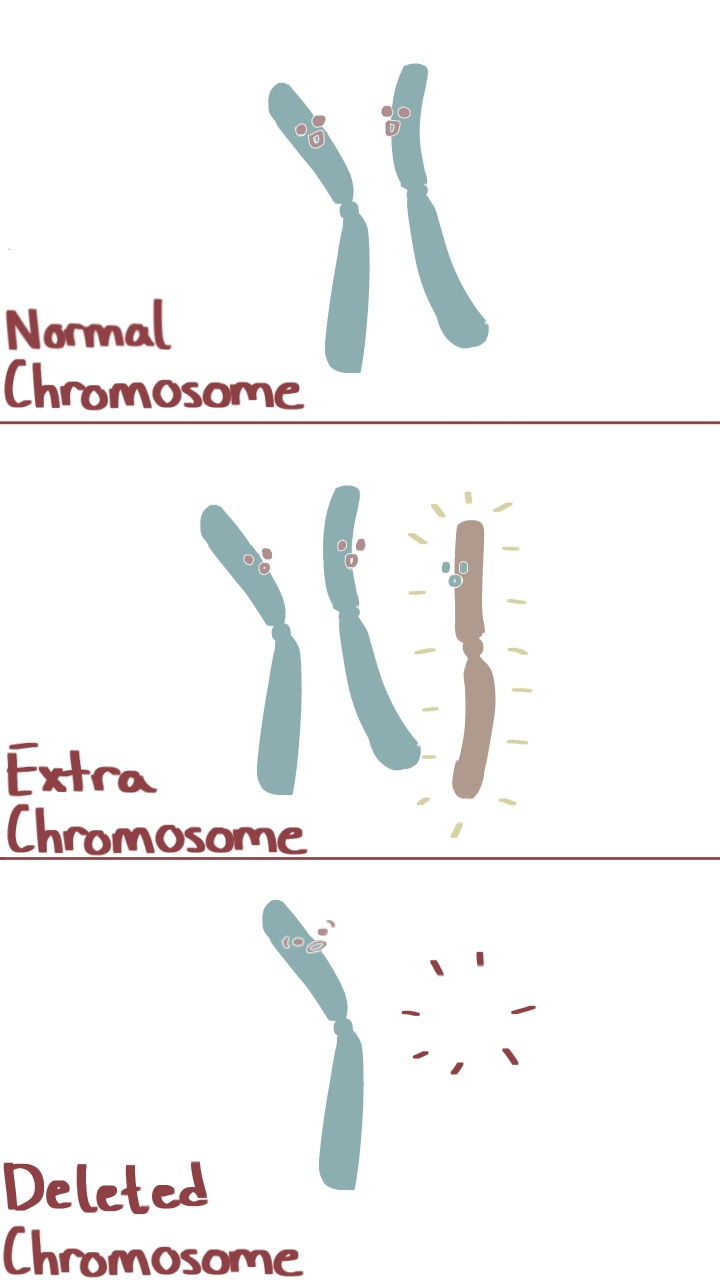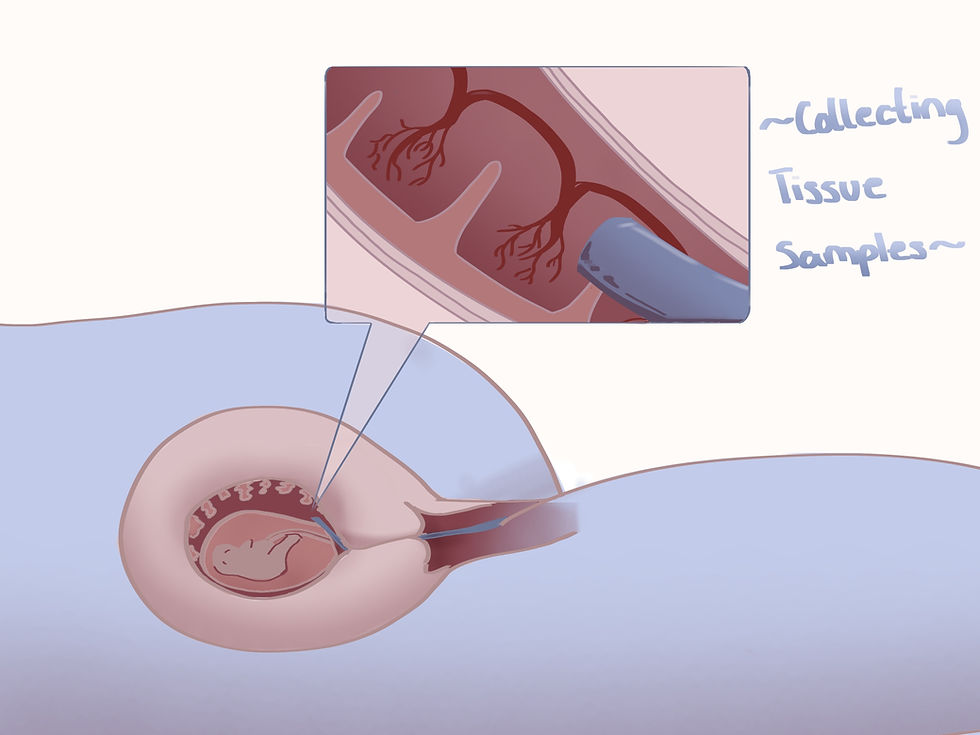What are Aneuploidies?
- Science Holic
- Aug 6
- 3 min read
Author: Simone Maimon
Editors: Roan Aly, Linzi Yeung
Artist: Christina Chen

Nearly every cell in our body contains DNA, packaged in chromosomes, which provides instructions for proper cell function and maturation. What are the consequences of chromosomal disorders that arise during early development? Chromosomal disorders are conditions caused by the deletion, rearrangement, or duplication of extensive sections of DNA. Aneuploidy is a type of chromosome abnormality in which chromosomes are deleted or duplicated. It causes many conditions, most famously Down syndrome. Chromosome abnormalities are unique because they don't alter the DNA, but instead change the number of copies of it; therefore, they produce a range of severe diseases.
Offspring inherit any abnormalities that arise in the parents’ egg or sperm cell chromosomes. This is most often caused by nondisjunction—the failure of chromosomes to separate during cell division—which results in one cell receiving two copies of a chromosome, while another gets no copies. For example, if an egg contains two copies of chromosome 21 and combines with a sperm that has another copy, then this would result in Trisomy 21. According to statistics, 5-10% of fetuses have a chromosomal abnormality, a leading cause of miscarriage. There are two main types of chromosomal abnormalities: sex chromosomes and non-sex chromosome aneuploidies.

If a baby is born with an aneuploidy, it is likely because they have affected sex chromosomes, or X and Y chromosomes. Because the X chromosome is essential for development, every known sex chromosome aneuploidy still keeps at least one X chromosome. The four most common diseases are Klinefelter’s (XXY), Jacob’s (XYY), Triple X (XXX), and Turner’s (X) syndromes. People with these conditions can live relatively normal lives, but they are often infertile, have learning disabilities, and have altered height and body proportions. Triple X and Turner’s syndrome have the least noticeable symptoms because cells with two X chromosomes deactivate one at random, thus the cell relies on only one X chromosome. Since cells have a mechanism to deactivate two X chromosomes, children with additional X chromosomes are not severely affected. Still, the degree to which one experiences these conditions varies from person to person.

Some babies have also been born with one of the 3 types of non-sex chromosome aneuploidies: two of these conditions increase a baby’s chance of infant mortality. These are Edwards syndrome—a condition caused by a duplicated 18th chromosome (trisomy 18)—and Patau syndrome—trisomy 13. The third condition, Down syndrome (trisomy 21), is the only autosomal disease that people can live with past childhood; the median age of survival is in the mid-40s. People with Down syndrome have characteristic features such as a flat face, prominent eye folds, and a single long crease across their hand instead of two (simian crease). Additionally, they often have learning disabilities and are at increased risk for Alzheimer's disease and leukemia.
Nowadays, it's very easy to tell, even before birth, whether or not a baby has a chromosomal disorder using various screening methods. The fetus can be tested with Chorionic Villus Sampling (CVS) at 9-14 weeks of gestation. From 14-16 weeks, amniocentesis can be performed instead. Both of these procedures take extracts from the uterus, testing cells surrounding a developing fetus for genetic abnormalities. However, these tests are quite invasive, as they involve physically invading the parent, and increase the chance of miscarriage by 1%.
Babies who are born with chromosomal disorders can experience a range of developmental or health-related symptoms. At the same time, they may quickly die after birth, or have their life expectancy cut in half. What if a parent finds out their baby has one of these diseases? What if the child is likely to die during their infancy? In places where abortion is legal, the parent is faced with a profound ethical dilemma: should the child be born with possible debilitating defects? Is it less cruel to prevent their birth? Ultimately, the decision is left to the parent.
Citations:
“Invasive (Amniocentesis / CVS) Prenatal Testing.” London Spectra,
14 July 2025.
Milani, Daniel A. Queremel. “Genetics, Chromosome Abnormalities.” StatPearls [Internet].,
U.S. National Library of Medicine, 24 Apr. 2023,



Comments